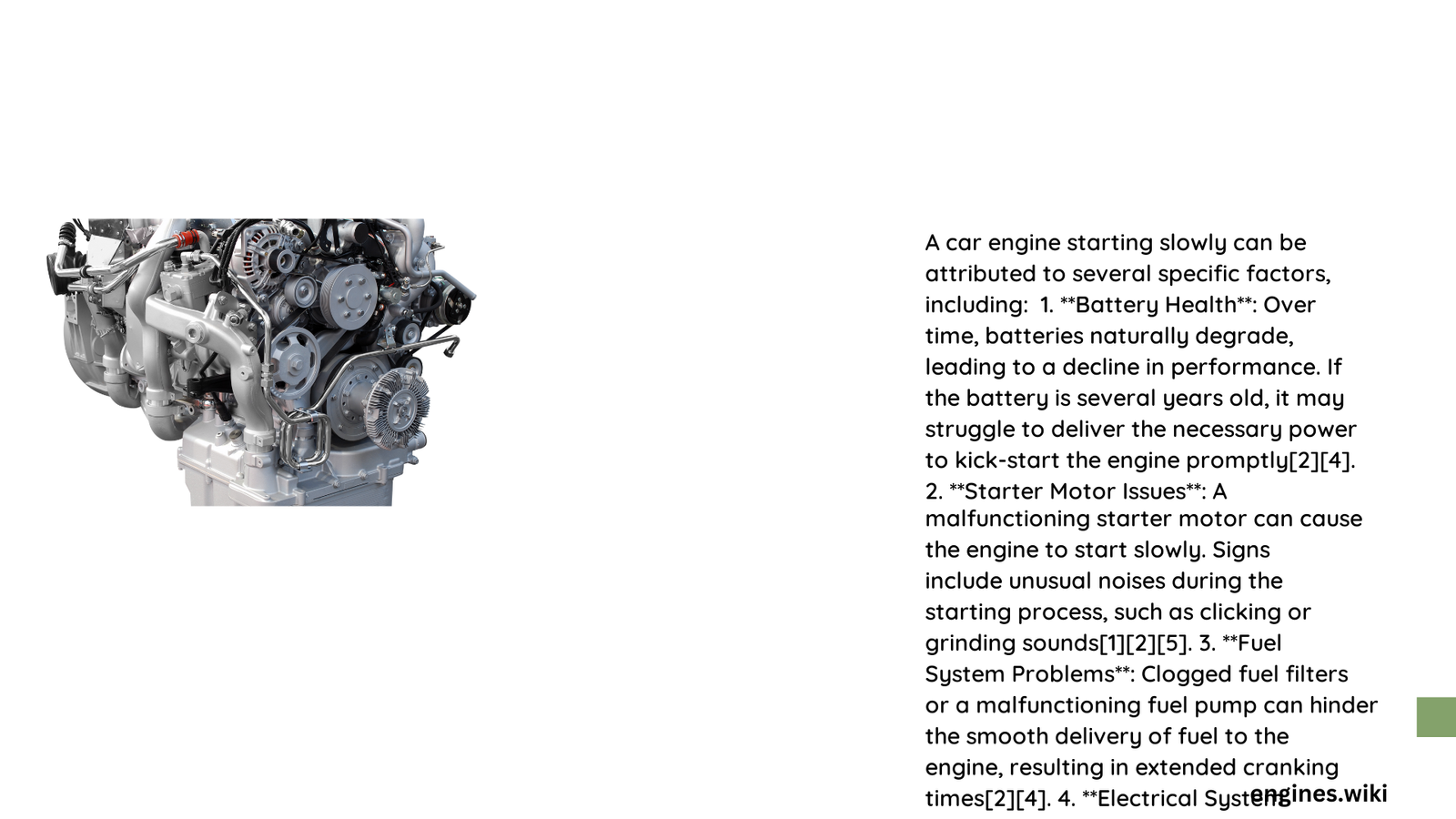When a car engine starts slowly, it signals potential underlying mechanical or electrical issues that demand immediate attention. Modern vehicle owners often experience frustrating moments of sluggish engine cranking, which can indicate complex problems ranging from battery degradation to starter motor malfunction. Understanding these symptoms and their root causes is crucial for preventing unexpected breakdowns and maintaining optimal vehicle performance.
What Causes Slow Engine Cranking?
How Do Battery Voltage Levels Impact Engine Start?
A car’s battery plays a critical role in engine starting performance. Here are key voltage-related insights:
| Battery Condition | Voltage Range | Starting Performance |
|---|---|---|
| Fully Charged | 12.6 – 12.8V | Excellent |
| Moderate Charge | 12.4 – 12.5V | Good |
| Low Charge | Below 12.2V | Poor/Slow Cranking |
Voltage Drop Characteristics
- Normal Cranking Voltage: Should remain above 10.5 volts
- Problematic Voltage Drop: Falling below 9.6 volts indicates battery weakness
- Recommended Action: Perform load testing if voltage consistently drops
What Role Does the Starter Motor Play?
The starter motor transforms electrical energy into mechanical rotation, initiating the engine’s combustion process. Several factors can compromise its performance:
- Mechanical Wear
- Worn brushes
- Damaged armature
-
Compromised solenoid engagement
-
Electrical Challenges
- Corroded connection points
- Insufficient ground connections
- Inadequate current supply
How Can You Diagnose Slow Cranking?
Effective diagnostic techniques include:
- Multimeter Voltage Testing
- Measure battery terminal voltage
- Check cable resistance
-
Evaluate ground connections
-
Professional Load Testing
- Determines battery’s capacity
- Identifies potential replacement needs
- Provides comprehensive electrical system assessment
What Are Common Electrical System Culprits?
Several components can contribute to slow engine starts:
- Battery Age
- Typical lifespan: 3-5 years
-
Degradation increases starting resistance
-
Alternator Performance
- Inadequate charging
- Inconsistent voltage regulation
-
Potential internal component failure
-
Corroded Connection Points
- Battery terminals
- Ground straps
- Starter motor connections
When Should You Seek Professional Help?
Consider professional diagnostics if:
– Slow cranking persists after battery replacement
– Multiple starting attempts are required
– Unusual sounds accompany engine cranking
– Electrical system warning lights illuminate
Preventive Maintenance Strategies

- Regular battery health checks
- Clean battery terminals
- Ensure proper cable connections
- Monitor charging system performance
- Replace battery every 4-5 years
Technical Specifications for Battery Health
| Parameter | Acceptable Range |
|---|---|
| No-Load Voltage | 12.6 – 12.8V |
| Cranking Voltage | > 10.5V |
| Cold Cranking Amps | Varies by vehicle |
Expert Recommendations
- Use high-quality batteries
- Avoid frequent short trips
- Maintain consistent charging
- Store vehicle in moderate temperatures
Pro Tip: Invest in a reliable multimeter and learn basic electrical system diagnostics to catch potential issues early.
Conclusion
Understanding why a car engine starts slowly empowers vehicle owners to address potential problems proactively. Regular maintenance, timely diagnostics, and informed decision-making can significantly enhance your vehicle’s reliability and performance.
